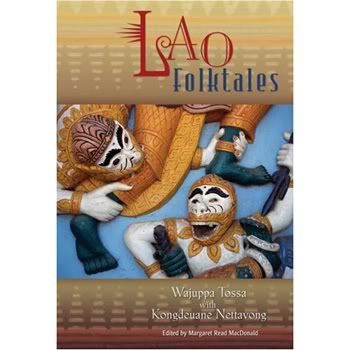Currently, I think the gold standard is Wajuppa Tossa and Kongdeuane Nettavong's Lao Folktales.

The majority of the folktales are retold well. The English is grammatically correct. Great care was taken to make the stories coherent, consistent and detailed, able to be read both on page and aloud. Most of the stories collected by Tossa and Nettavong have a good sense of poetry to their retelling and are very well organized. Currently, many other Lao folklore collections suffer because the language is badly fractured and incoherent, even by folktale standards.
Tossa and Nettavong also take great care to credit individual sources for these stories. This is particularly rare in folktale collections but so important because it starts to connect us to a greater sense of cultural lineage. It allows us to appreciate that in each generation, there are actually some very specific people who work to preserve these stories in public, not just in the home.
The stories collected by Tossa and Nettavong are retold with a minimum of interjection from other cultures. This is refreshing, because there are several otherwise fine collections whose retellings have been mangled by non-Lao writers. While many are well-intentioned, there are few things as jarring as reading a jataka filled with biblical metaphors or references to Uncle Sam and George Washington. If I'm reading a story about Xieng Mieng, I don't want to hear him go 'uff da!' without a very, very good reason.
The great tragedy of the Tossa and Nettavong book is that it is expensive for most families and not readily available in mainstream bookstores. A new edition costs $40 plus shipping and handling, although a used copy can go for around $23+. A paperback edition would definitely be welcomed.
I think there's still a definite call in the market for a more casual, slimmer, high-quality collection of folk tales. With nearly 100,000 Lao under 18, there's a sufficient market.
At the more affordable end of the spectrum, many collections of Lao folk stories suffer from either terrible writing, terrible art, terrible organization, or terrible physical quality (easily breaking and getting torn.) Or in some extreme cases, all of the above.
Hopefully emerging writers will consider this encouragement to add and improve upon the great body of literature in our community, particularly regarding our collective heritage found in our traditional folktales.
What do you see as some of the challenges for preserving these tales?
No comments:
Post a Comment